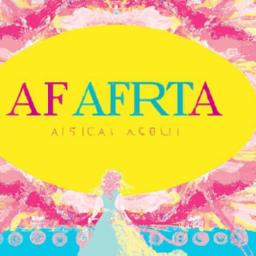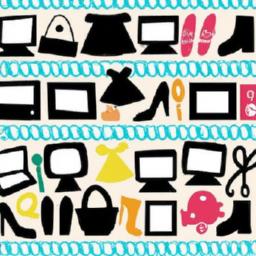Unveiling Style: The Fashion Encyclopedia’s Iconic Moments Through the Ages
Fashion is a tapestry woven from threads of culture, innovation, and individual expression, a dynamic narrative that transcends time and geography. In the pages of the “Fashion Encyclopedia,” iconic moments capture the essence of societal shifts, artistic movements, and the relentless pursuit of beauty – a testament to how clothing can reflect, challenge, and redefine our identities. This article takes you on a journey through history, unveiling the pivotal trends and events that have shaped the fashion landscape. From the opulent styles of the Renaissance to the bold statements of contemporary streetwear,let us explore the landmark moments that not only influenced the wardrobes of their time but also left an indelible mark on the collective consciousness of generations. Join us as we chronicle the evolution of style,celebrating the creativity and craftsmanship that define our ever-changing relationship with fashion.

Exploring Timeless Elegance: Icons Who Shaped Fashion History
Throughout the annals of fashion history, certain individuals have emerged as luminaries, their distinctive styles leaving indelible marks on the fabric of time. Coco Chanel, as a notable example, revolutionized women’s attire by introducing the concept of casual chic, liberating women from the constraints of corsets and bringing the iconic little black dress into vogue. The elegance of her designs spoke of simplicity and sophistication,embodying a spirit of modernity that resonated with women across generations. Christian Dior followed suit, unveiling the “New Look” in the post-war era, which emphasized femininity with cinched waists and voluminous skirts. This vision not only celebrated the female form but also reinvigorated the fashion industry during a period yearning for beauty and glamour.
Moreover, the influence of Audrey Hepburn transcended mere acting; her collaboration with designer Givenchy forged an inseparable bond between cinema and haute couture. The iconic “Breakfast at Tiffany’s” look remains a blueprint for timeless elegance, characterized by pearls, little black dresses, and effortless charm. In the realm of menswear,David Beckham created waves by challenging conventional norms; his daring style choices and savvy use of streetwear echoed the changing dynamics of masculinity in fashion. Each of these icons has crafted a narrative that not only reflects their personal styles but has also continuously shaped the evolving landscape of fashion, resonating through every fiber of modern aesthetics.
| Fashion Icon | Signature Style | era |
|---|---|---|
| Coco chanel | Chic simplicity, little black dress | Early 20th Century |
| Christian Dior | New Look, feminine silhouettes | 1940s-1950s |
| audrey Hepburn | Timeless elegance, classic accessories | 1950s-1960s |
| David Beckham | Street style, daring combinations | 2000s-present |

Landmarks of Style: Defining Trends and Their Cultural Impact
The evolution of fashion has always been intertwined with the cultural currents of its time, acting as both a mirror and a catalyst for societal change. Iconic trends often emerge from specific moments in history, showcasing the fusion of art, politics, and everyday life. For instance, the Roaring Twenties celebrated opulence and liberation, marking a sudden shift in women’s fashion. flapper dresses, characterized by their loose fit and shimmering embellishments, allowed women to express newfound freedom. This was not merely a stylistic choice but a reflection of the enduring fight for women’s rights and a rejection of Victorian-era constraints. Other key trends, like the hippie movement of the 1960s, embraced individuality and counterculture, promoting peace and love through vibrant colors and loose-fitting garments. The clothing styles of these eras did more than define fashion-they also shaped perceptions and lifestyle choices across generations.
As we delve deeper into the impact of fashion, it’s crucial to note how certain styles have transcended temporal boundaries to influence contemporary design. Key elements from past eras frequently enough resurface, reinterpreted in ways that resonate with modern sensibilities. for example, the revival of 90s grunge has permeated today’s wardrobes, merging comfort with rebellion. High-waisted jeans, oversized flannels, and combat boots have returned, symbolizing a nostalgia for a time marked by authenticity and defiance. Below is a table illustrating notable eras and their defining trends:
| Era | Defining Trend | Cultural Significance |
|---|---|---|
| 1920s | Flapper Fashion | Women’s liberation and jazz culture |
| 1960s | Hippie Aesthetic | Peace movements and counterculture |
| 1990s | Grunge Revival | Rebellion against mainstream culture |
| 2020s | Sustainable fashion | Environmental consciousness and ethical living |
These trends not only shape aesthetics; they often encapsulate the societal and political sentiments of their times. As designers draw inspiration from the past, they revive these cultural dialogues, weaving together threads of history with contemporary challenges. In doing so,fashion remains a powerful narrative tool,capable of inspiring discourse,defining identities,and fostering community across the globe.

Curating Your Wardrobe: Lessons from Fashion’s most Iconic Eras
Exploring the evolution of fashion reveals not just the fabric of clothing but also a rich narrative of culture, creativity, and identity. Each era brought its distinctive charm, presenting timeless lessons for curating a wardrobe that resonates with personal style. The Roaring Twenties, with their flapper dresses and dapper suits, taught us the art of embracing boldness and movement. one could channel this era by integrating key pieces such as:
- Beaded fringed dresses for an enchanting evening look
- Wide-brim hats that add an air of sophistication
- Oxford shoes for a touch of vintage flair
as we glide into the structured silhouettes of the 1960s, the emphasis on individuality and youthful rebellion reveals the importance of personal expression in fashion. This decade encourages us to play with contrasts and colors, suggesting staples like:
| Piece | Description |
|---|---|
| Mini skirts | A bold statement of freedom and playfulness. |
| Graphic tees | Unleashing personal narratives through art and slogans. |
| Tailored blazers | A timeless element that embodies sophistication. |
Future Outlook
as we draw the curtain on our exploration of “Unveiling Style: the Fashion Encyclopedia’s Iconic Moments Through the Ages,” we reflect on the threads that bind us to the past and the fabric of our present. Each era of fashion tells a story, not just of trends and fabrics, but of cultural upheavals, social movements, and the indomitable spirit of self-expression.From the opulence of baroque silhouettes to the minimalist strides of modernity, these iconic moments serve as landmarks in the journey of human creativity and identity.
In the ever-evolving tapestry of style, we witness how fashion serves as a mirror, reflecting societal values while also challenging them. The designs that have graced runways and streets alike invite us to ponder deeper questions about art, politics, and personal identity. As we stand at the intersection of history and innovation, let us continue to celebrate the courage of those who dared to express themselves through their wardrobe choices, shaping the world around them.
As we bid farewell to this chapter, remember that fashion is not just what we wear-it is a language that transcends time, inviting each of us to participate in an ongoing dialog of influence and creativity. So, whether you’re flipping through the pages of an encyclopedia or curating your own wardrobe, embrace the iconic moments that inspire you, and let your unique style unfold in the grand narrative of human expression. After all, the story of fashion is far from over; it is a vibrant, ever-evolving tale waiting to be written, one outfit at a time.
